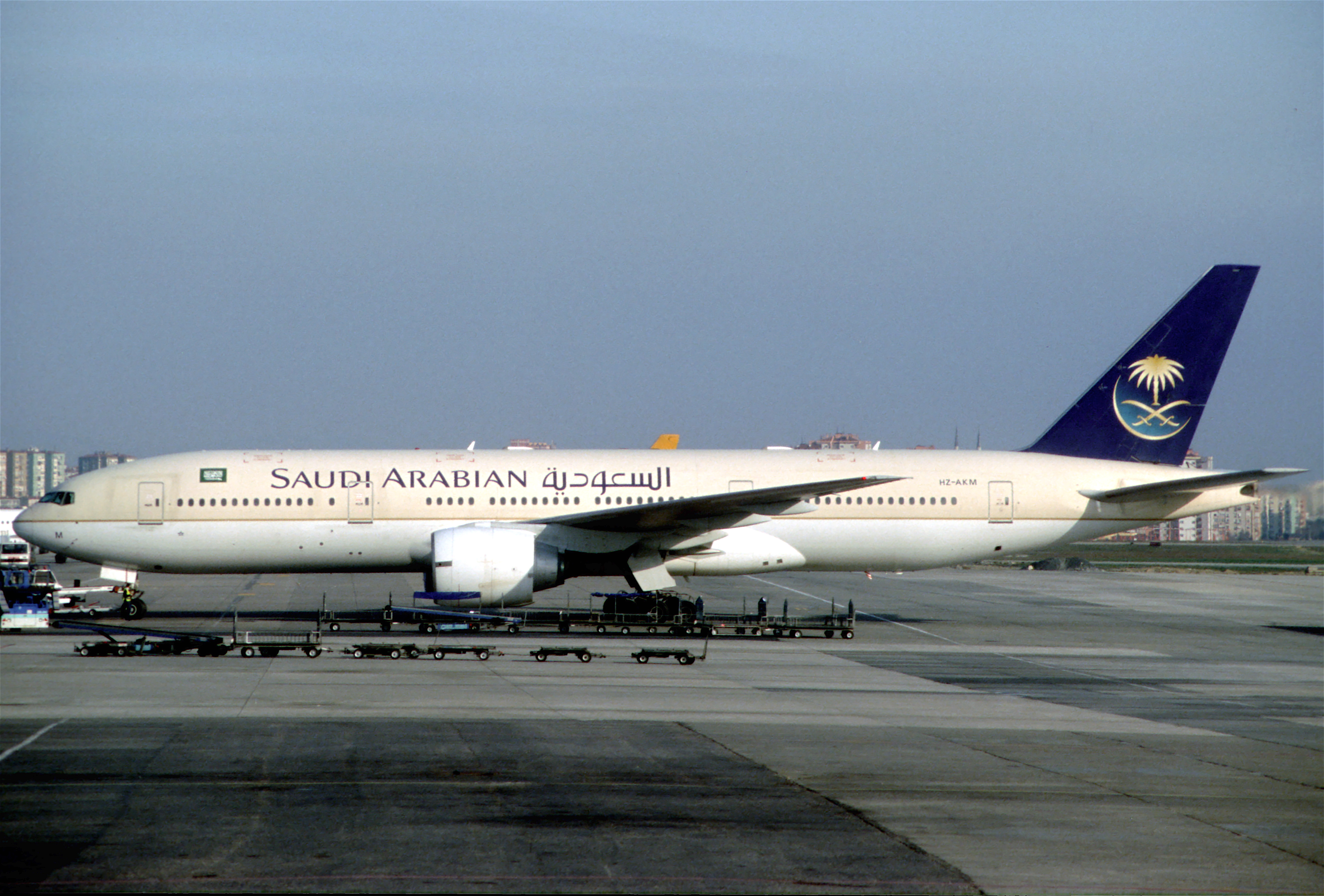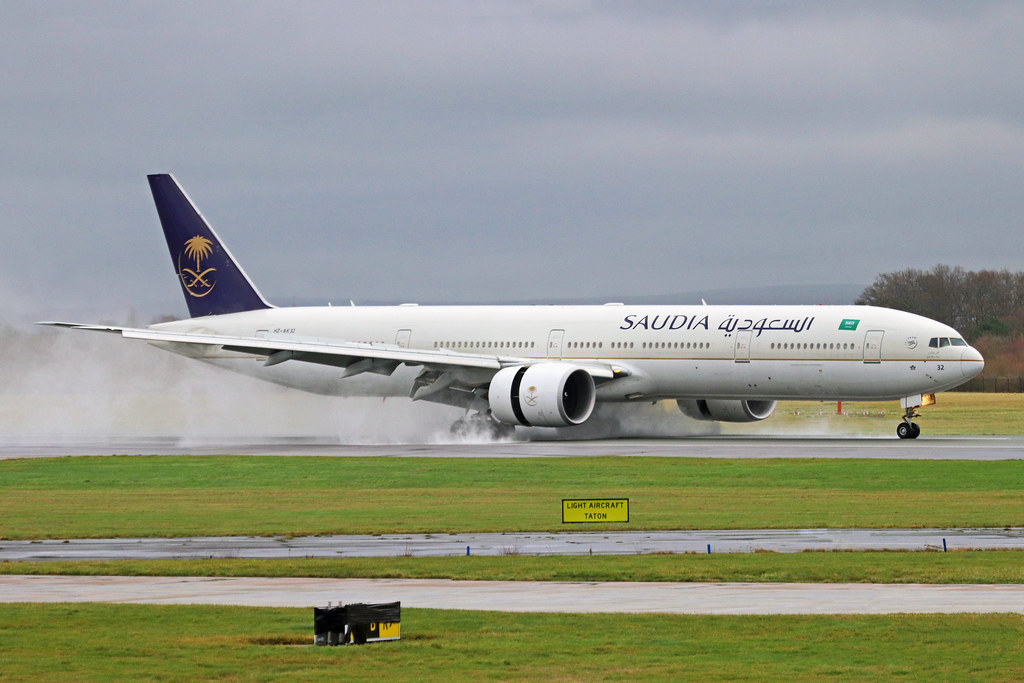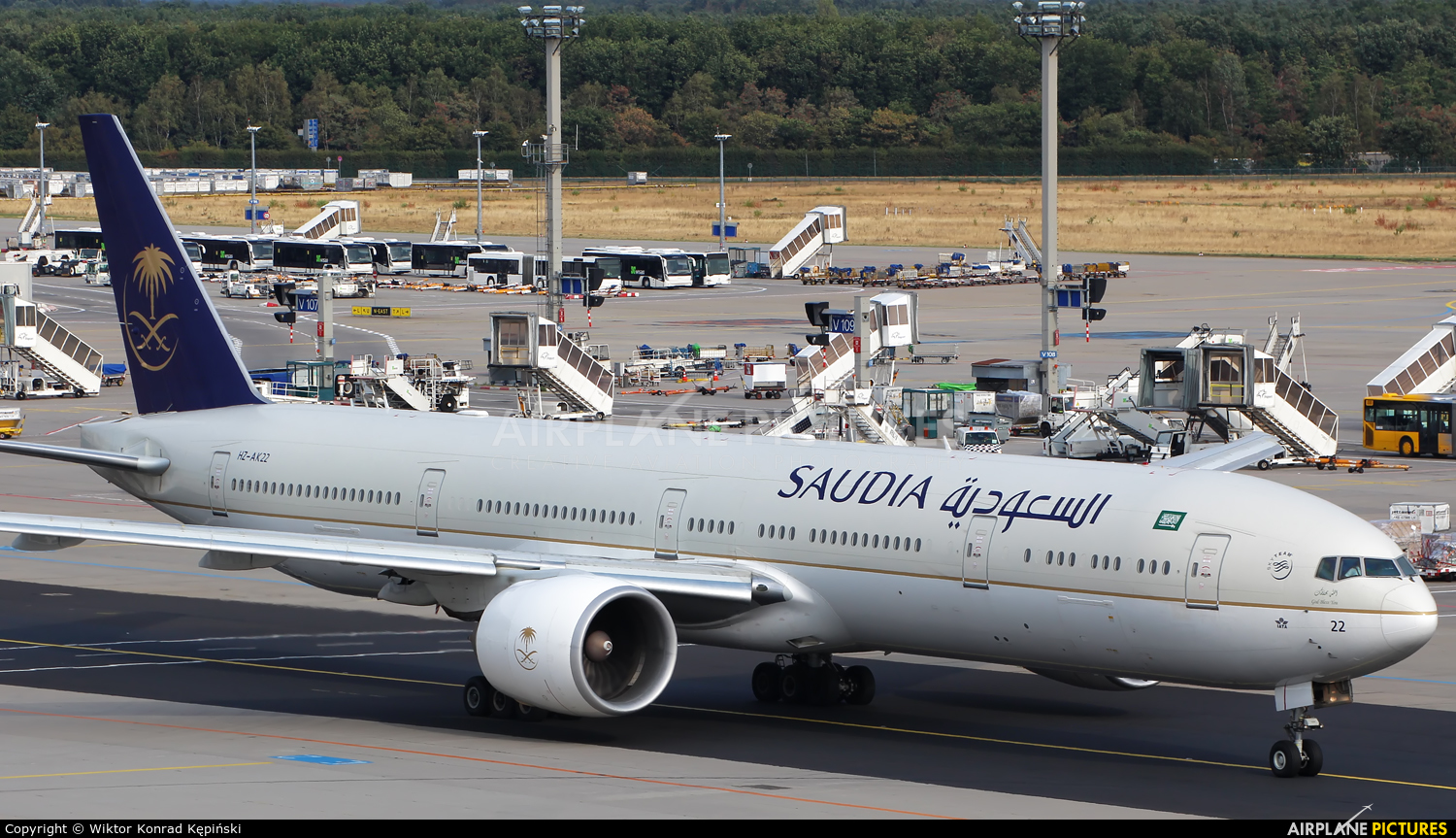Boeing 777 Saudi Airlines
Boeing 777-3FGER. JetPhotos.com is the biggest database of aviation photographs with over 4 million screened photos online! HZ-AK36 Boeing 777-3FGER Saudi Arabian Airlines Rory Delaney JetPhotos. 12 Saudia First Suite, 36 Business Class, 242 Guest Class 259 ft (78.86 m) 213 ft (64.80 m).
Boeing 777-300 Saudi Airlines
Saudi Arabian Airlines : The Jewel of the Middle EastSaudi Arabian Airlines, which traces its beginnings to May 1945, is the largest airline in the Middle East and the 25th largest in the world. Its inception and development symbolized dramatic change for an entire nation.
Saudi Arabian Airlines began in 1945 when the United States government presented Saudi Arabia with a Douglas C-47, the military version of the DC-3. The following year, Saudi Arabian Airlines was formed as an operating agency of the Ministry of Defense. Scheduled services began in 1947 when the airplane connected the Arabian Gulf to the Red Sea.
It flew 745 miles from Jeddah to the capital, Riyadh, and a further 250 miles to Dhahran. The nation's first airport and operating base was at Kandara, close to what is today downtown Jeddah.
The airline, then known as SDI, immediately established itself as the most effective means of transportation in Saudi Arabia, signaling the beginning of dramatic change for an entire nation. Operating in a country with only a few hundred miles of paved roads, no railways, and the camel as the prominent mode of transportation, SDI amazed the population with its feats. Journeys that once took 60 days by camel were made in just four-and-a-half hours by air.
By the end of 1947, SDI operated a fleet of 10 DC-3s. Domestic route expansion was slow, due primarily to a lack of serviceable airfields. As ground facilities became available, SDI extended its service first to towns in the Najd and southern regions, then to the northern communities of the Kingdom. The airline also began service to neighboring countries, with flights from Jeddah to Beirut, Cairo, and Damascus.
By June 1949, the fleet had grown to 15 DC-3s and 5 Bristol 170s. Until this time, aircraft maintenance had been carried out in the open air. However, by the early 1950s, the first maintenance shops, which were built in Jeddah, provided better and more effective working conditions.
In 1952 SDI acquired four Douglas DC-4s, which provided the greater range needed for operations to Mediterranean destinations. Two years later the first of 10 Convair 340s entered service. It was much faster than the DC-3, flying from Jeddah to Riyadh in an hour.
By its 10th anniversary, SDI had brought all outlying communities of the Kingdom to within a short journey of one another. Its most important connections were to Jeddah, the local transportation hub for the annual Hajj pilgrimage. International service also had begun to the Middle Eastern countries of Egypt, Lebanon, and Syria.

As recently as 1960 most of the Kingdom's major cities and towns were not linked by paved roads. This lack of adequate surface transportation intensified the need for freighter service as well as passenger travel. The airline responded by boosting its payload and range by introducing two Douglas DC-6A Loadmasters in 1964. These efficient air freighters, with their large freight-loading doors and strengthened floors, also had the range to fly to European capitals.
.jpg)
The airline entered the jet age in 1962 with the purchase of two Boeing 720Bs, which it used to expand its international service. In 1965 SDI began flying to Casablanca via Beirut, Tripoli, and Tunis, establishing the first direct air link between the eastern and western halves of the Arab world. SDI also commenced operations to the European cities of Frankfurt, Geneva, and London. Airports were constructed at Abha, Gizan, Madinah, Tabuk, and Taif to permit expansion of domestic routes. Three DC-9s joined the fleet in 1967, and the following year SDI acquired two Boeing 707-368s. The Boeing 737s began to arrive in 1972 (the year SDI changed its name to Saudia), and this fleet of wide-body, short-haul twin-jets grew to 20.
Passenger traffic grew tremendously. By the mid-1970s, the Jeddah-Riyadh route alone accounted for 250,000 passengers a year, and even minor airports, such as those in Abha and Gizan, counted more than 100,000 a year. The passenger total passed the one-million mark in 1973, and it continued to grow at an unprecedented pace. To accommodate the growth, in 1975 Saudia began operating two of the 214-seat Lockheed L-1011 Tristars. Saudia would eventually operate a total of 20 L1011s.

The Jeddah-Riyadh-Dhahran route became so extensively traveled that in June 1976, Saudia introduced a no-reservation shuttle service. Peak traffic reached 64,000 passengers a month, making the trans-Arabian route one of the busiest in the world.
Air Austral
In addition to its regular passenger and freighter service, Saudia provided private service for the growing number of business executives and administrators with special needs. In 1976, Saudia established a Special Flight Services Division with airplanes ranging from small Piper Apaches to various models of the Grumman Gulfstream.
In 1975, Saudia leased four Fokker F-27 Friendship twin-jets (48-seat models) and in 1980, two Fokker F-28 Fellowships (60-seat models) to meet the growing demands of domestic service. However, the 100-seat capacity of the Boeing 737 soon became the standard for all except the most dense domestic routes.By the early 1980s, the number of Saudia international destinations had risen to 30 from 13, and the number of its international airports had increased to four. Saudia leased two 377-seat Boeing 747-200Bs in June 1977 to meet the demand for travel to European destinations. It later added routes from Jeddah to New York using Boeing 747 Special Performance (SP) models. Saudia also added service to Bangkok, Manila, Nairobi, and Singapore.
Saudia carried more than 11 million passengers in 1983, and demand continued to increase. The fleet grew with the lease of large numbers of aircraft, including 24 DC-8s, 14 Boeing 747-200s, and 14 Lockheed C-130 freighters. These airplanes joined an existing fleet of 20 Lockheed TriStars, 12 Boeing 747-100s and -SPs, 20 Boeing 737s, and 11 Airbus A300B4-600s.
The 1980s witnessed the inauguration of direct flights on trans-Atlantic service to Washington, D.C., from both Jeddah and Riyadh. Seasonal service was later opened to Orlando, Florida. In 1986 Saudia established an air cargo hub at Brussels, Belgium, and a similar hub in Taipei, Taiwan, in 1988. In 1990 an all-cargo route to Tokyo opened as an extension of the Taipei service.In 1995, Saudia flew more than 12 million passengers on national and international flights, and the airline celebrated its 50th anniversary with announcement of a new airplane order from Boeing. On October 25, Saudi contracted to modernize its fleet with the purchase of 23 777s, 5 747s, 29 MD-90s, and 4 MD-11s.

In December 1997, Saudia took delivery of the first Boeing airplanes from the 1995 order, including a 747-400, 777-200, MD-11F, and MD-90. The event marked the first time that Boeing 7-series airplanes and Douglas Products Division airplanes shared the same stage.
Boeing Commercial Airplane Group is proud to present the history of Saudi Arabian Airlines, an industry partner whose profitable and safe operations continue with the Boeing 777, 747, MD-90, and MD-11. All content is provided by Saudi Arabian Airlines.
- Editor

return to top AERO text-only contents Boeing Home Commercial
Copyright © The Boeing Company. All rights reserved.